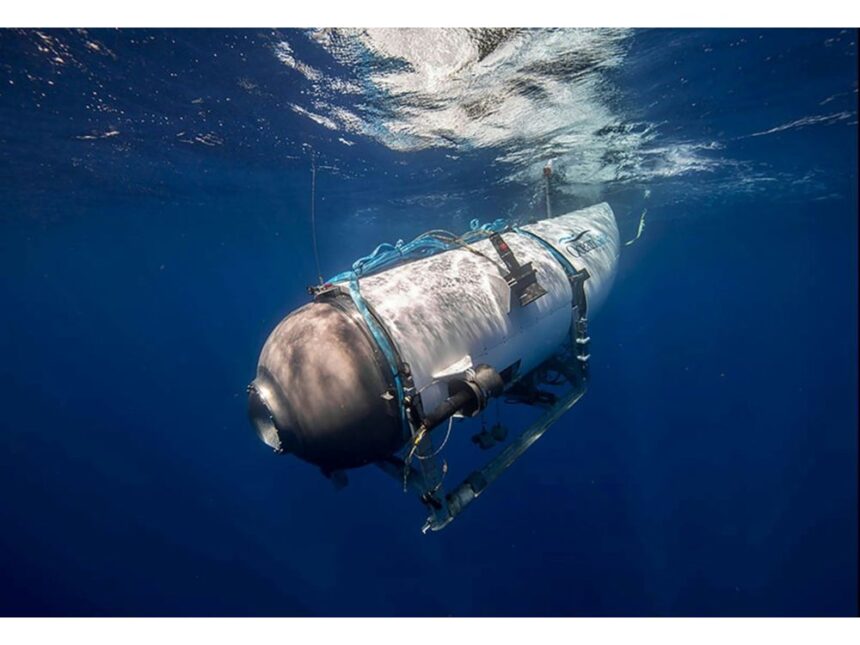In a damning conclusion to one of the most high-profile maritime tragedies in recent years, federal investigators have determined that catastrophic engineering failures coupled with insufficient regulatory oversight led to the implosion of the Titan submersible, killing all five people aboard during their descent to view the Titanic wreckage.
The U.S. Coast Guard’s Marine Board of Investigation released its final report Thursday, placing primary blame on OceanGate Expeditions for “numerous operational, technical, and safety failures” that culminated in the vessel’s catastrophic implosion approximately 1,600 feet above the ocean floor.
“This tragedy was not an unforeseeable accident. It was the result of a company that deliberately operated outside the established safety system and repeatedly ignored warnings about the dangers of their approach,” said Jason Neubauer, chairman of the Marine Board of Investigation, during a press conference in Washington.
The report reveals that OceanGate’s carbon fiber hull design—unprecedented for deep-sea submersibles—lacked sufficient testing and certification. Industry experts had warned the company for years about potential catastrophic failure risks associated with the experimental design. According to recovered evidence, the vessel imploded with such force that it was detected by underwater acoustic monitoring systems nearly 400 miles away.
“The company prioritized innovation over established safety standards,” said maritime safety expert Dr. Eleanor Richards, who was not involved in the investigation but reviewed the findings. “Carbon fiber is simply not designed to withstand the extreme pressure differentials experienced at those depths.”
Perhaps most troubling were the multiple opportunities to prevent the disaster that were missed or ignored. The report documents at least seven instances where industry experts, former employees, and certification bodies raised serious concerns about the Titan’s design and operational protocols. In 2018, the Marine Technology Society wrote directly to OceanGate CEO Stockton Rush—who died in the implosion—warning that the company’s experimental approach could lead to “catastrophic” outcomes.
The Coast Guard investigation found that Rush, who piloted the vessel on its final journey, operated in a regulatory “gray area” by registering the Titan in the Bahamas and conducting dives in international waters, effectively circumventing more stringent U.S. safety requirements. The report specifically criticized this approach as “regulatory avoidance” rather than compliance.
The victims’ families have responded with mixed emotions to the report’s findings. “While nothing will bring our loved ones back, we hope this investigation prevents similar tragedies,” said a statement from relatives of British businessman Hamish Harding, who perished alongside Rush, French explorer Paul-Henri Nargeolet, and Pakistani-British businessman Shahzada Dawood and his son Suleman.
The disaster has already prompted legislative action. The SUBMARINE Act (Submersible Unified Boundaries for Maritime Awareness and Regulation in International Navigation Environments), introduced in Congress last month, would create comprehensive safety standards for all commercial deep-sea vessels operating from U.S. ports, regardless of their flag state.
“This case highlights dangerous gaps in our regulatory framework for emerging technologies,” said Representative Morgan Fitzgerald, the bill’s primary sponsor. “Innovation cannot come at the expense of human safety.”
For the deep-sea exploration industry, the implications are substantial. Companies are now facing increased scrutiny from insurers, investors, and potential customers. Several operators have voluntarily submitted to additional third-party safety certifications to distinguish themselves from OceanGate’s approach.
Industry insiders note that the tragedy has sparked renewed interest in maritime safety regulations and their enforcement. “We’re seeing a fundamental shift in how these operations are perceived,” noted maritime attorney Victoria Chambers. “The era of self-regulation is likely coming to an end.”
As technological advances continue to open new frontiers for exploration, the question remains: how do we balance innovation with safety in environments as unforgiving as the deep ocean? The Titan tragedy provides a sobering reminder that when engineering meets extreme environments, established safety protocols exist for good reason.










